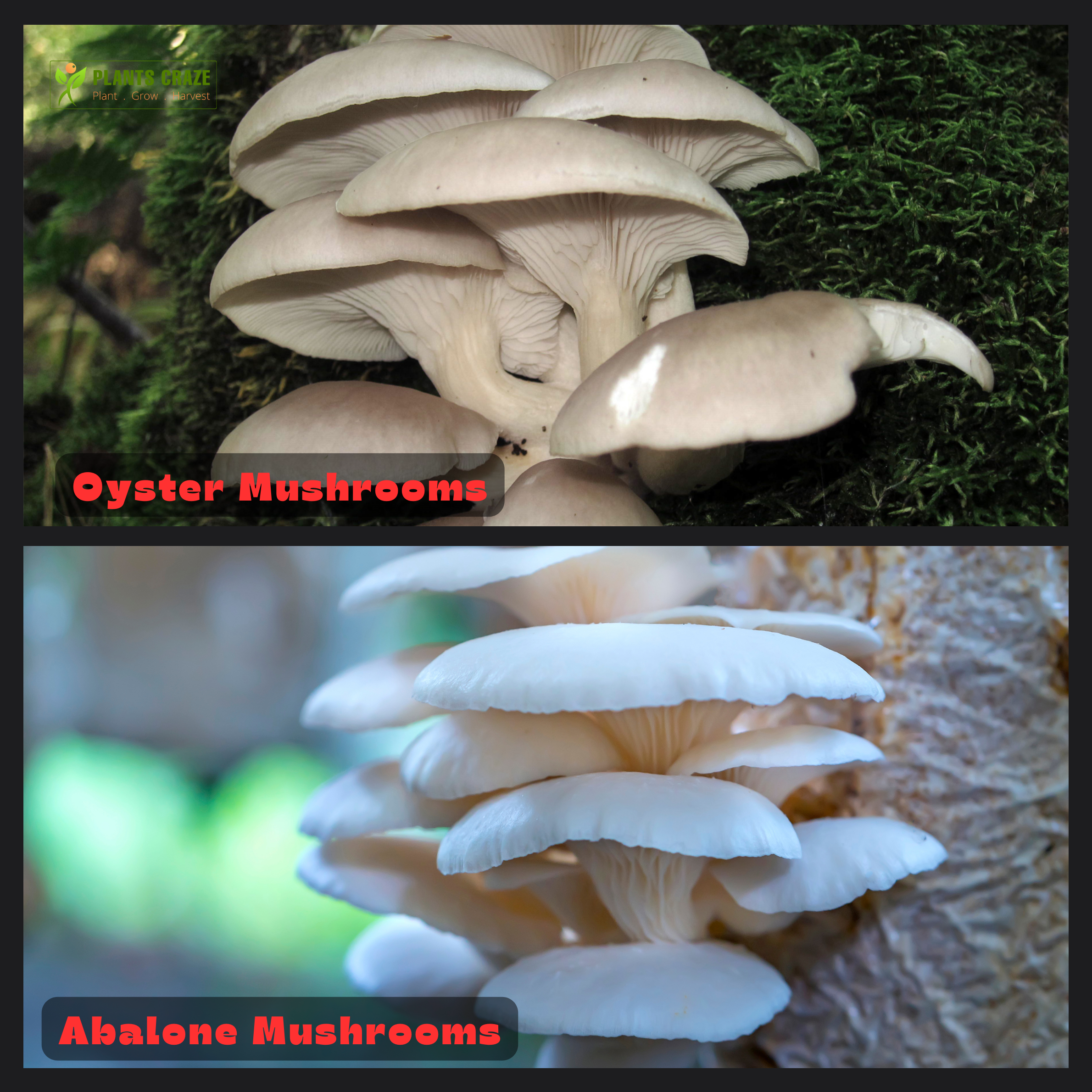The culinary and morphological debate of Abalone vs. Oyster Mushrooms is a recent hot talk of the blog.
But they have such similar looks and taste that they can even baffle chefs and mycologists as well!
Table of Contents Show
Overview Of Abalone & Oyster Mushrooms
Abalone and Oyster Mushrooms are similar in their features. They have the same cap shape, size, color of gills, and stem length.

Here is a table mentioning the key features of these Mushrooms.
| Features | Abalone Mushrooms | Oyster Mushrooms |
|---|---|---|
| Color | Brown | White |
| Origin | Asia | North America |
| Price | More expensive | Less expensive |
| Availability | Rare | Common |
| Flavor | Slightly sweet | Umami |
| Texture | Firm, meaty | Delicate |
| Culinary uses | Stir-frying, grilling, baking | Stir-frying, grilling, baking |
Abalone And Oyster Mushrooms: Similarities
Both Abalone and Oyster Mushrooms belong to the same family Pleurotaceae. Due to this reason, they may share some similarities with one another.
Here are some similarities between Abalone and Oyster Mushrooms:
- Appearance: Both of these Mushrooms have fan-shaped caps, growing in clusters.
- Texture: Both Abalone and Oyster Mushrooms have a rigid and meaty texture.
- Flavor: Both Mushrooms possess a nutty flavor.
- Nutritional value: These are good protein, fiber, and vitamin sources.
Differences Between Abalone Vs Oyster Mushrooms
Although both Abalone and Oyster Mushrooms belong to the same family, they differ. Here are some of the differences between these Mushrooms:
- Size: Abalone Mushrooms are smaller than Oyster Mushrooms. The diameter of their cap is about 2-3 inches, while Oyster Mushrooms’ caps are about the diameter up to 6 inches.
- Stem: Stem of Abalone Mushrooms are short and thick, while Oyster Mushrooms have long and thin stems.
- Flourishing conditions: Abalone Mushrooms are more difficult to grow than Oyster Mushrooms. Abalones require specific substrates to grow, while Oysters can grow in various substrates.
- Color: Abalones are typically white in color, while Oysters can be white, yellow, pink, or gray.
- Uses: Both of these Mushrooms can be used in various dishes. Abalones can be used in stir-fries, soups, and stews. While Oysters are often used in Asian cuisine.
Abalone And Oyster Mushrooms Look-Alikes
Abalone and Oyster Mushrooms are edible but have some poisonous look-alikes.
| Abalone look-alikes | Oyster look-alikes |
| Pearly-white Oyster mushroom | Ghost fungus |
| King trumpet mushroom | Jack-o'-Lantern mushroom |
| Ivory-Funnel mushroom | Elm-Oyster mushroom |
From Editorial Team
Conclusion!
Although Abalone and Oyster Mushrooms are edible, most of the look-alikes are poisonous.
So, before collecting Abalone and Oyster Mushrooms, you should carefully look for their recognizable characteristics.
